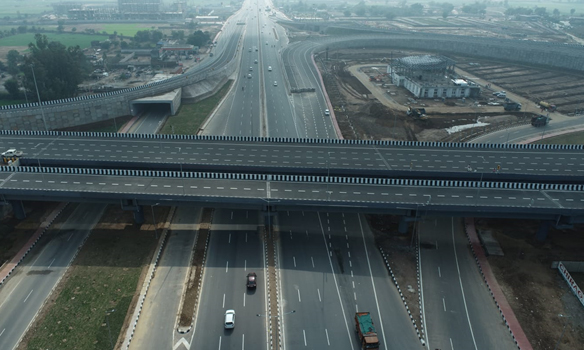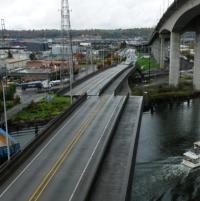The 246km-long Delhi-Dausa-Lalsot first section of India's Delhi-Mumbai expressway was inaugurated yesterday, halving travel times between Delhi and Jaipur to 3.5 hours.

The Delhi-Mumbai Expressway (Twitter/ @nitin_gadkari)
The Delhi-Mumbai Expressway will be an eight lane access-controlled greenfield expressway with potential future expansion to 12 lanes. It is expected to reduce travel time between Delhi and Mumbai from 24 to 12 hours across its total stretch of 1,386km.
According to the India authorities, the expressway will be the country’s longest and most advanced expressway upon completion. Apart from Delhi, it will pass through five major states - Haryana, Rajasthan, Madhya Pradesh, Gujarat and Maharashtra, connecting major cities, 13 sea ports, eight airports (including upcoming Jewar Airport and Navi Mumbai Airport) and eight multi-modal logistics parks.
It will be the first expressway in India and Asia to incorporate animal overpasses and underpasses. To minimise the impact on wildlife from construction, especially through Ranthambore Wildlife Sanctuary, boundary walls were built on the expressway. The design aims to shield wildlife habitats by allowing animal crossings to avoid traffic via the erected overpasses and underpasses.
The expressway’s Vadodara-Mumbai section includes an eight-lane cable-stayed bridge across the Narmada River. The structure is currently under construction by Ashoka Buildcon and will be India's first eight-lane extradosed bridge upon completion. The 2.22km-long segmental box girder bridge features two 21.3m-wide carriage ways of four lanes each. In December 2022, Ashoka Buildcon estimated bridge completion was achievable within 27 months.
According to the National Highways Authority of India, the Delhi-Mumbai expressway will open by the end of first quarter of 2023, and related bridges will be fully operational by end of 2024.



